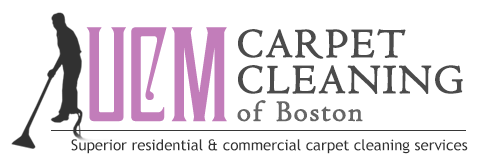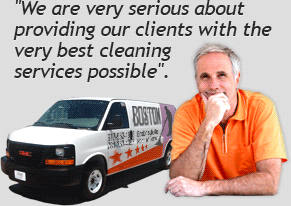Safe & Effective Carpet Cleaning
Most carpet care products are relatively safe to use, and have only a small impact on the environment. However, some of these products do contain toxic chemicals that are harmful both to the janitor who uses them and to people who occupy the building. It is best to select the mildest products you can find that work effectively.
Also, carpets that are cleaned less often require more and stronger chemicals that do carpets that are regularly maintained. It is a good strategy to set up a maintenance program that takes care of carpet needs throughout their useful life.
Using the wrong products or excess amounts of chemicals can easily damage carpets. Therefore, a successful maintenance program will feature the products suited to the work, and will thoroughly train janitors in proper cleaning methods.
- Use mild products for regular daily cleaning.
- Use stronger products only for weekly deep cleaning.
- Avoid ingredients that are poisonous or that harm the environment.
- Wear protective gloves and goggles when missing or using any cleaning products.
A successful carpet care program begins before installation, and then continues with routine vacuuming, maintenance cleaning, and periodic restoration efforts.
Carpet Design & Installation
Carpets are both functional and visually appealing. However, the wrong kind of carpet, or one that is poorly installed will require extra maintenance.
Generally you should match the carpet type, texture, and underlining to its working environment. It is also important to keep carpets away from situations where water, chemicals, or other hard-to-clean materials are used. For example, locker rooms, kitchens, and copy centers are not good places to install carpet.
In addition, it's essential to consider how nearby, non-carpeted floors or walls will be cleaned. Chemicals used for that kind of maintenance can easily spill over and damage carpets.
Dust Prevention
Preventing soil from entering a building in the first place means carpet cleaning can be less frequent, thereby reducing the amounts of chemicals used.
Large, frequently cleaned walk-on mats should be placed at each high-traffic building entrance. These mats should be large enough to capture several footsteps. Experiment with different sizes and textures to see what works best at each doorway. Every few days these mats will become "full" of soil. Therefore, it's important to vacuum all doorway mats frequently so that they will continue to capture soil before it is carried into the building.
Some modern buildings are totally enclosed. If possible, the heating, ventilating, and air conditioning system in such a building should be operated so that the air pressure just inside each doorway is higher than that of the natural air outdoors. Doing so will push airborne dust back outside.
Vacuuming
Daily vacuuming with strong suction, tight filter, rotating brush machines removes up to half or more of the soil that falls onto carpets. How much effort does it take to attain this level of cleaning? Routine vacuuming, with up to four back and forth strokes of the wand across the carpet, is sufficient for low traffic areas. Up to ten wand strokes may be needed at outside doorways and other high traffic areas. Supplemental vacuuming will be needed along walls and carpet edges where soil tends to accumulate.
Other Prevention Techniques
Some building managers prohibit colored soft drinks, coffee, and other items that will easily stain carpets. Such a tight policy makes building occupants unhappy at best. A compromise is to either to have hard floors instead of carpets in food service rooms, or to place sacrificial carpet mats in those areas.
It helps to think of carpets as large, flat air filters. Most light particles and airborne soil will eventually end up attaching to carpets. Unless something is done, significant amounts of carpet soil will come from kitchen fumes and other forms of building use. Properly maintained vents that exhaust outdoors can capture most materials that will otherwise fall out onto the carpets.
Carpet Spotters
Another form of prevention comes from reacting immediately to spills and spots before they have time to become semi-permanent stains. However, thorough training in spill clean-up is very important because using the wrong techniques or chemicals can smear the spilled substance or set the spot permanently. It is usually best to start with clear, cold water and blotting cloths, and then move on to try stronger chemicals only if needed.
A special word of caution - carpet spot removal products contain some of the most dangerous chemicals found in carpet care products. Use these products sparingly, and only when wearing gloves and goggles. Provide extra ventilation, and if possible do the work when building occupants are elsewhere. In any case, avoid products that have highly dangerous ingredients such as hydrofluoric acid (rust remover), or tetrachloroethylene (Type 4 spot remover).
Maintenance Cleaners
Rotary bonnet cleaners and carpet shampoos usually are fairly mild products. However, it's easy to misuse or over-apply these maintenance cleaners. Such improper use may make it necessary to do hot water extraction more often or more extensively. Either way, the use of excess chemicals or the wrong ones leads to more effort and expense.
The toxic ingredients that are in maintenance cleaners pose their greatest risks through inhalation (e.g., isopropanol) or skin contact (e.g., butoxyethanol or ethanolamine). Therefore, providing good ventilation and wearing gloves are very important to protect the janitor doing the work. It is also important to keep building occupants away from wet, freshly cleaned carpets so as to reduce their exposure to these chemicals.
Extractants
With some exceptions, presprays used with hot water extraction systems are also fairly mild products. Careful application, thorough agitation, sufficient contact time, and extraction before drying help these products do their job, and reduce the amounts of chemicals that would otherwise have to be used in reworking the carpet. Training and experience are needed to prepare the janitor for using these products effectively.
Hazardous ingredients used in hot water extraction products include acid rinses (e.g., hydroxyacetic acid) and solvents (e.g., butoxyethanol). The best strategy is to choose products without these problem ingredients. If that is not possible, than it is essential that the janitor wear gloves and goggles, and that building occupants are kept away from the area until the work is complete.
Mildewcides & Disinfectants
A few restoration products contain tributyl tin, formaldehyde, and other ingredients that are meant to kill microorganisms, but at the same time are highly toxic to humans. Some of these ingredients, such as tributyl tin, are banned from use because of their potential to cause harm to the environment.
Important Safety Tips
Use stronger chemicals sparingly and carefully to avoid harming the user or building occupants. Be sure that each janitor is well trained, and if possible, have your people work in buddy teams when using stronger chemicals.
- Corrosive chemicals (acids or caustics) can blind you in seconds.
- Always wear goggles to protect your eyes.
- Corrosives can also damage your skin and leave scars.
- Wear gloves to protect your hands.
- Some poisonous chemicals absorb through your skin.
- Always wear gloves when using products containing glycol ethers or ethanolamines.
- Some poisonous chemicals are easily inhaled.
- Be sure that your work area has enough ventilation.
- Mixing different products together can create poisonous chemicals.
- Avoid mixing products, and be sure to rinse out work buckets after each use.
Carpet Cleaning Ingredients
Manufacturers make several products for carpet cleaning. These products range from mild to strong, and have many different ingredients. Some of these cleaning products have acids and other chemicals that can harm you.
The following table lists chemical ingredients commonly found in strong carpet cleaners. Some are relatively safe if you wear gloves and goggles, while others are so risky that you should not use them. In addition, there are some chemicals that may be relatively safe to a janitor wearing gloves and goggles, but that can harm the environment.
Do Not Use - Severe Health Risk
Hydrofluoric Acid
Nitrilotriacetate / Nitrilotriacetic acid
Perchloroethylene / Tetrachloroethylene
Tributyl Tin
Use Extreme Care or Avoid - Health Risk To Janitor
Butane, Isobutane, or Propane (aerosol propellants)
Ethanolamines
Glycol Ethers (such as butoxyethanol)
Quaternary Ammonium Chloride
Sodium Bisulfate
Sodium Carbonate
Sodium Hydroxide
Avoid if Possible - Will Harm The Environment
Dibutyl Phthalate
CFC-22 (Now illegal for janitorial use)
HCFC-141 (Now illegal for janitorial use)
Nonyl Phenol Ethoxylate
Octyl Phenol Ethoxylate
Sewer districts prohibit discharges of some of these chemicals, such as phenol, tetrachloroethylene, and tributyl tin, as well as acids or bases that are corrosive (having a pH less than 4-5 or greater than 11-12). Avoid products that make your sewer discharge illegal. In the San Francisco Bay Area it is illegal to discharge any cleaning materials or wastewaters onto the ground or street.










